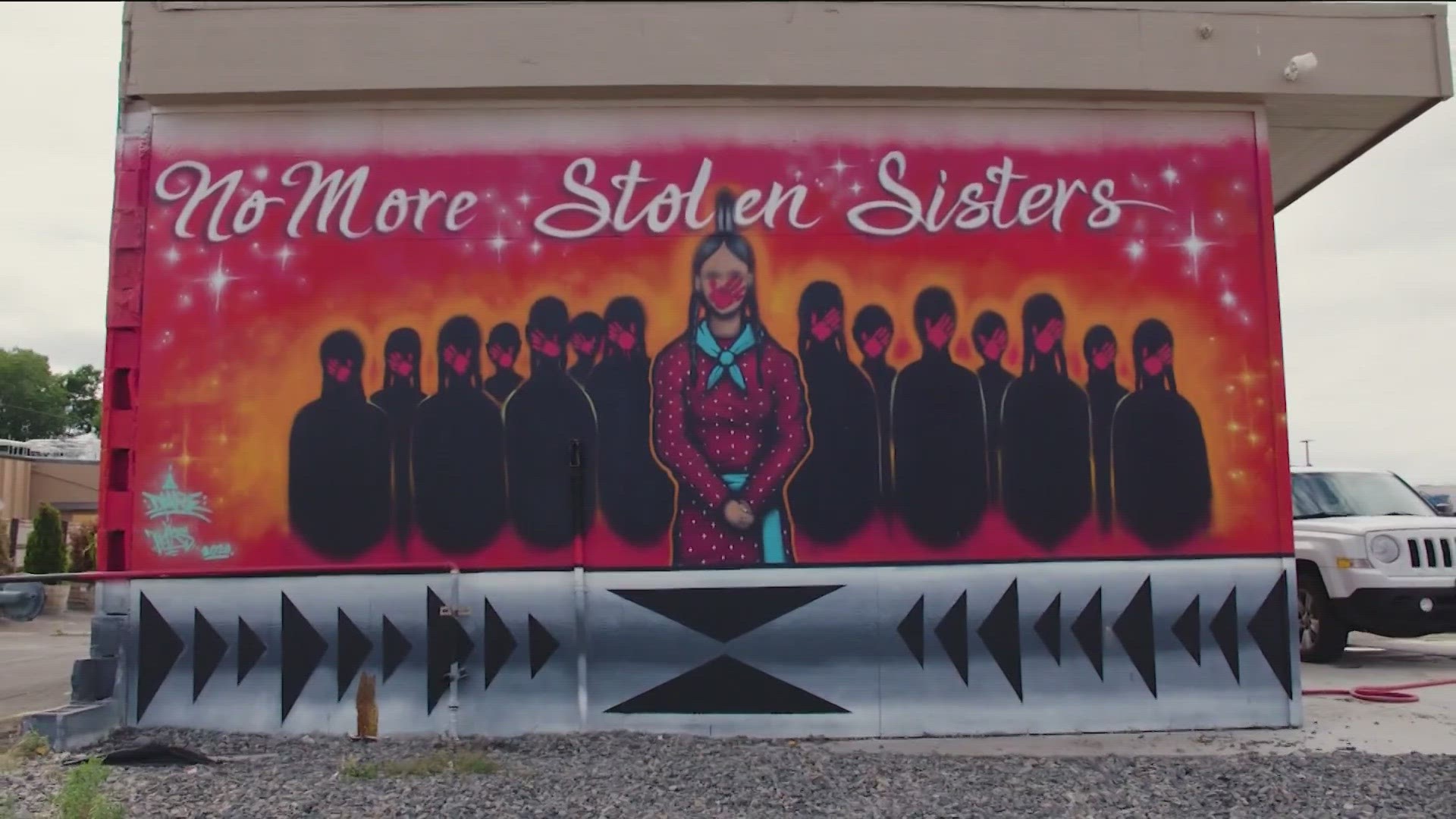MOSCOW, Idaho — Certain moments can create a lasting impact that form the direction of our lives. Christina Briggs-Mathers, a senior at the University of Idaho (UI), can trace a heavy chunk of her undergraduate experience back to her childhood friend.
"Well, when I was young, one of my friends growing up - who was Indigenous - his father was murdered. So, I just feel like that, if I have a chance to help, I should do so," Briggs-Mathers said. "It was, like, one of those things that just stays with you for a while."
Briggs-Mathers has spent the last 1.5 years working alongside a fellow soon-to-be graduate, Madison Wolf, on a project to create the most comprehensive database for missing and murdered Indigenous women, girls, and two-spirit people (MMIWG2) in North America.
The term two-spirit is used for non-binary or transgender people in North American Indigenous cultures.
The Idaho State Legislature labeled the current state of missing and murdered Indigenous people in Idaho as a 'crisis' in 2020 through House Concurrent Resolution 33 (HCR33). The ensuing report, conducted largely by researchers at Boise State University, concluded - in part - the following:
- Idaho’s average missing persons rate is approximately 10.59 per 100,000 persons. The average rate for Indigenous persons in Idaho is 18.99 per 100,000 persons.
- Most of Idaho’s Indigenous missing persons are female (75%), in contrast with Idaho’s non-indigenous missing persons of which 28.8% are female.
- Approximately 63% of Idaho’s Indigenous missing persons have been missing for more than 1 year.
The report recommended steps forward to find solutions to these disproportionate findings. That included more comprehensive data. While the University of Idaho MMIWG2 database projects are larger scale than the regionally focused than the HCR33 report, the database has a real utility.
"All sources of data are important," HCR33 co-author Melanie Fillmore said.
The UI MMIWG2 database has evaluated 3,000 cases so far between the United States and Canada, according to Briggs-Mathers. The database is intended to serve as a resource for experts to understand trends and common denominators. Early trends are as follows according to the University of Idaho:
- Violence against Indigenous females tends to come mostly from Indigenous males.
- Tribal or other Native American law enforcement tends to have more success with these cases than city, county or state police.
- Especially in more remote or rural areas, there is often information about the crime or the timeline that doesn’t get shared with those investigating the incident.
- Crimes involving Indigenous women are often reported late, not reported at all, or reported only to be met by resistance from the would-be investigators.
Briggs-Mathers adds irregular reporting largely contributes to a lot of these factors.
"There's a lot of mistrust in the indigenous community, a lot of places where they're just told, 'Oh, well, they just ran away,' rather than looking into them as a legitimate missing person," Briggs-Mathers said. "I think that unless you are a traditional, like middle class white person, you're going to be overlooked."
Under faculty director and mentorship, this project will be passed onto younger students after the current pair graduates, according to Briggs-Mathers.
"Dr. [Omi] Hordwitz, who is my mentor, she is in talks with Indigenous community on campus to try to figure out what they would like to do with [the database], because it's not our story to tell. It's theirs," Briggs-Mathers said. "We just wanted to hop on there and help. We want to give them full rein of what happens with this database."
Join 'The 208' conversation:
- Text us at (208) 321-5614
- E-mail us at the208@ktvb.com
- Join our The 208 Facebook group: https://www.facebook.com/groups/the208KTVB/
- Follow us on Twitter: @the208KTVB or tweet #the208 and #SoIdaho
- Follow us on Instagram: @the208KTVB
- Bookmark our landing page: /the-208
- Still reading this list? We're on YouTube, too:

